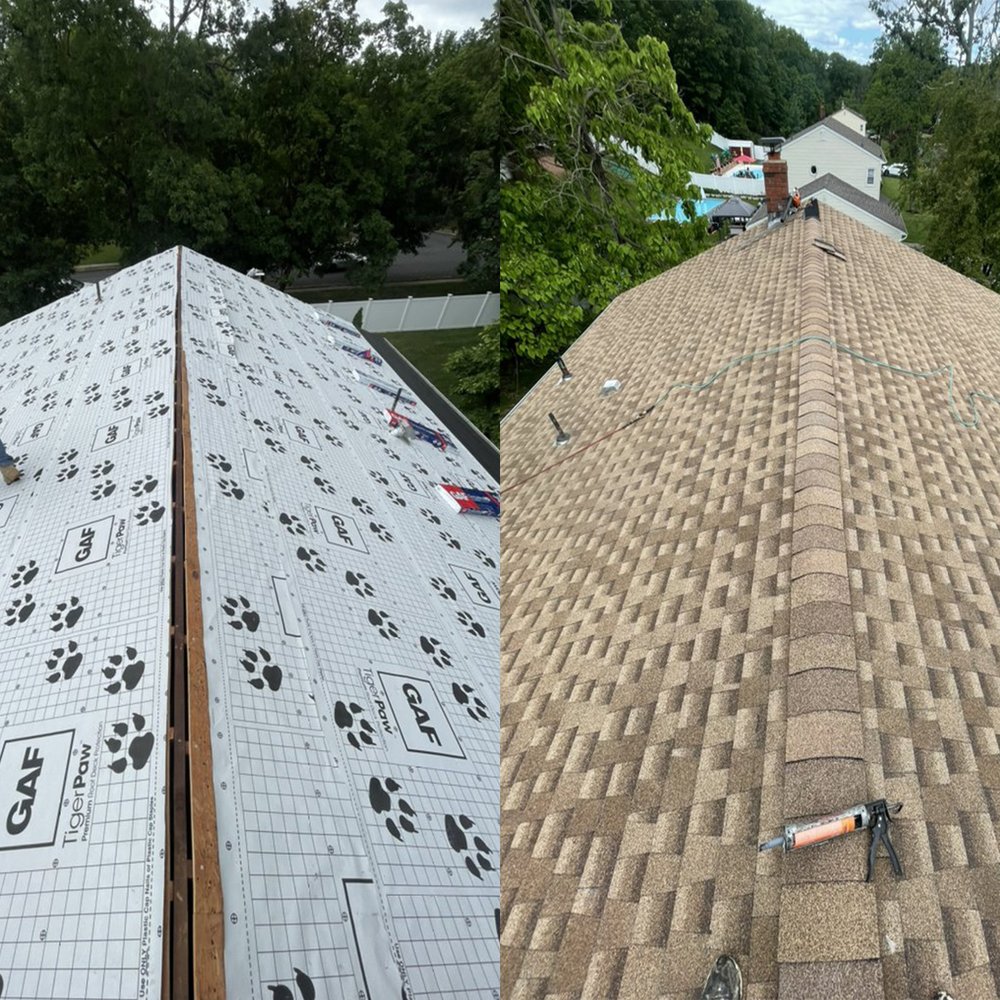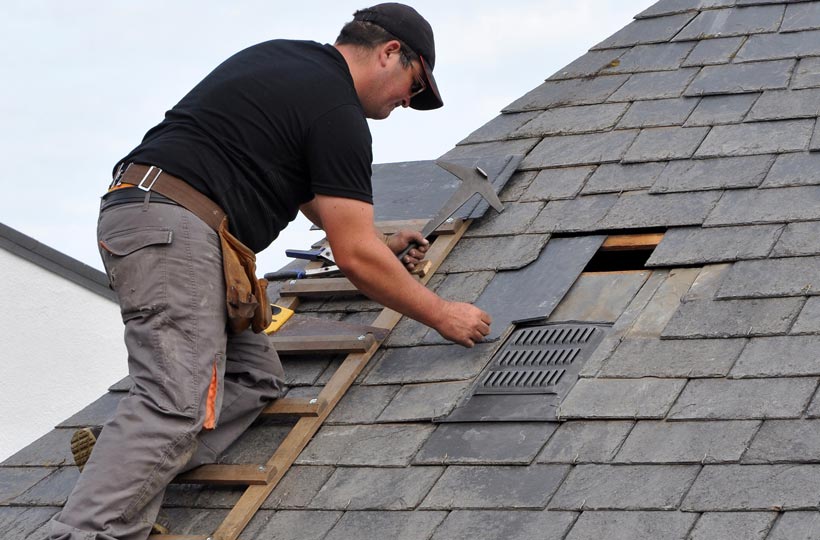Oahu Roofing: Dependable Roofing Solutions for Homes and Businesses
Recognizing the Various Kinds Of Roofings: A Comprehensive Guide for Homeowners
In the world of homeownership, selecting the proper roof style is a decision that lugs substantial effects for both functionality and aesthetic charm. With a variety of choices-- ranging from the typical gable to the contemporary flat-- each kind provides unique advantages and obstacles that need to line up with the homeowner's ecological factors to consider and particular needs. Comprehending these distinctions not just aids in making an informed option however likewise influences lasting maintenance and energy performance. As we check out the complexities of various roofing types, it comes to be noticeable that one size does not fit all; the right selection might stun you.
Gable Roofs
Saddleback roofs, characterized by their triangular form, are amongst one of the most prominent roof styles because of their simpleness and effectiveness in dropping water and snow. This style features two sloping sides that fulfill at a ridge, permitting for reliable drainage and minimizing the threat of water accumulation. The high pitch typically connected with gable roofing systems boosts their capacity to manage hefty rainfall, making them suitable for numerous climates.
In enhancement to their useful advantages, saddleback roofs offer aesthetic versatility. They can be adjusted to numerous architectural designs, from traditional to modern-day homes. The style can additionally fit extra attributes such as dormer windows, which improve all-natural light and ventilation in the attic area.
Additionally, saddleback roofs provide enough space for insulation, contributing to energy performance. Homeowners can select from a range of roofing materials, consisting of asphalt roof shingles, steel, and floor tiles, further improving modification choices.
Regardless of their benefits, gable roofings may require extra assistance in locations prone to high winds or heavy snowfall. Generally, the gable roofing remains a favored selection because of its mix of capability, durability, and aesthetic appeal.
Apartment Roofs
Flat roof coverings are typically recognized for their minimal layout and sensible applications, especially in commercial and commercial settings (oahu roofing). These roofings feature a almost straight or horizontal surface, which enables for easy construction and flexible space use. While they might lack the visual appeal of pitched roof coverings, level roofs supply many advantages, specifically in urban settings where taking full advantage of area is crucial
One of the main advantages of level roofs is their access. House owners can use the roofing space for different purposes, such as roof gardens, terraces, or photovoltaic panel installations. Additionally, flat roofings are usually more cost-effective to set up and keep compared to their sloped equivalents, as they need fewer products and labor.
However, flat roofings do present certain challenges. Proper drain is necessary to protect against water pooling, which can result in leaks and structural damages. For this reason, picking high-quality waterproofing materials and normal examinations are critical for guaranteeing longevity. Usual materials utilized for level roofing systems consist of built-up roofing (BUR), modified bitumen, and single-ply membranes, each offering distinct advantages. In general, flat roof coverings work as a adaptable and practical selection for lots of house owners and organizations alike.
Hip Roofing Systems
Hip roofing systems are identified by their sloped sides that converge on top, developing a ridge. This design is unique from saddleback roofs, as all four sides of a hip roof covering incline downwards towards the walls, supplying a more secure structure. The angle of the slopes can differ, enabling flexibility in building aesthetic appeals and functionality.
One of the primary benefits of hip roofing systems is their capability to hold up against hefty winds and unfavorable weather. The sloped surfaces make it possible for much better water drain, reducing the danger of leakages and water damage. In addition, hip roofings offer boosted attic room space, which can be made use of for storage and even exchanged habitable areas.
Nonetheless, creating a hip roofing system can be much more complicated and costly than easier roof covering types, such as saddleback roofs. The additional material and labor associated with developing the anchor slopes and guaranteeing correct architectural integrity can lead to higher expenses. Regardless of these drawbacks, several property owners favor hip roofing systems for their durability, aesthetic charm, and capacity for power efficiency.
Mansard Roofings
Mansard roof coverings, often acknowledged by their distinct four-sided layout, feature two inclines on each side, with the reduced incline being steeper than the top. This building style, originating from France in the 17th century, is not only cosmetically enticing but functional, as it takes full advantage of the functional area in the upper floorings of a structure. The steep lower slope enables even more clearance, making it an optimal choice for attics or lofts, which can be converted into living spaces.
Mansard roof coverings are identified by their versatility, suiting different architectural designs, from traditional to modern. They can be constructed with different products, including asphalt shingles, slate, or metal, offering home owners with a variety of options to fit their choices and budget plans. Furthermore, the layout allows for the combination of dormer home windows, enhancing natural light and ventilation in the upper degrees.
Nonetheless, it is important to think about the prospective drawbacks. Mansard roofings might need more maintenance because of the complexity of their layout, and their steep slopes can be challenging for snow and rain overflow. Overall, mansard roof coverings incorporate beauty with usefulness, making them a prominent selection among homeowners seeking unique building features.
Lost Roof Coverings
As home owners significantly seek simpleness and functionality in their architectural layouts, shed roofings have actually emerged as a prominent option. Defined by a single sloping plane, a shed roofing presents a minimal visual that complements various home designs, from contemporary to rustic.
One of the key advantages of a shed roofing system is its uncomplicated building, which typically converts to reduce labor and product costs. This design enables effective water drain, reducing the danger of leaks and water damage. Additionally, the vertical slope gives enough area for skylights, boosting natural light within the inside.
Lost roofing systems additionally article use versatility in regards to use. They can be effectively incorporated right into additions, garages, or outdoor frameworks like sheds and pavilions. Moreover, this roofing design can suit various roof materials, consisting of metal, asphalt tiles, or perhaps eco-friendly roofs, straightening with green initiatives.
However, it is important to take into consideration regional climate conditions, as heavy snow loads may necessitate changes to the roof covering's angle or framework. Overall, shed roof coverings offer a useful and cosmetically see page pleasing option for homeowners wanting to make the most of capability without jeopardizing style.
Verdict


Gable roofs, identified by their triangular form, are among the most prominent roofing designs due to their simplicity and effectiveness in losing water and snow. oahu roofing. The high pitch commonly connected with gable roofing systems boosts their capability to take care of heavy rainfall, making them appropriate for different climates
While they may do not have the visual allure of pitched roofing systems, flat roofings use various benefits, especially in urban atmospheres where optimizing space is vital.
